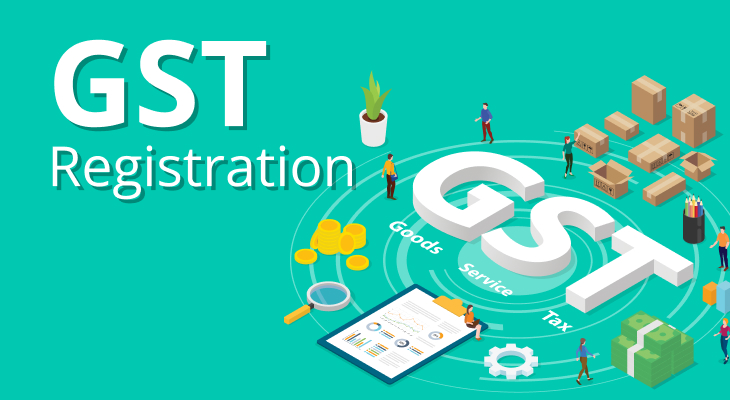Navigating the Intricacies of GST Enrollment: Expert Tips to Guarantee a Smooth and Effective Enrollment
Browsing the complex landscape of GST registration can be a complicated task for businesses aiming to abide with governing demands. By exploring the important aspects and usual challenges connected with GST enrollment, organizations can equip themselves with the understanding needed to navigate this complicated terrain successfully.
Understanding GST Registration Process
Browsing through the details of the GST enrollment process needs a complete understanding of the documentation and demands involved. The process starts by figuring out whether a business is qualified for GST registration based on aspects such as yearly turnover, interstate transactions, and the kind of items or services provided. When qualification is developed, the following step is to gather the required documents, including proof of business address, incorporation and identification proofs of the marketers, financial institution statements, and monetary declarations. These papers play an essential function in confirming the information offered in the registration application.
Moreover, it is necessary to guarantee that all information entered in the application are exact and approximately date, as any kind of disparities may result in hold-ups or denial of the enrollment. Comprehending the different GST types and their specific uses is additionally crucial in finishing the enrollment procedure smoothly. By familiarizing oneself with these requirements and staying organized throughout the application process, companies can browse the GST registration process successfully and effectively.
Necessary Paperwork for Enrollment
In order to effectively finish the GST enrollment procedure, businesses have to collect and submit vital documentation that corroborates their eligibility and supports the info provided in the application. The key files needed for GST registration typically include proof of service unification or address, identity and enrollment evidence of the main entrepreneur or partners, checking account statements, organization frying pan card, and evidence of service address such as utility costs or lease contract.

Making sure that all essential paperwork is precise, approximately day, and in the prescribed style is important to avoid hold-ups or complications throughout the GST enrollment procedure. Businesses need to meticulously assess the record demands described by the tax obligation authorities to help with a successful and smooth enrollment.
Common Pitfalls to Stay Clear Of
A critical facet of the GST registration procedure includes guiding clear of typical mistakes that can hamper the smooth conclusion of registration for organizations. Mistakes in details such as the service address, frying pan, or name can lead to delays in the enrollment procedure.
Another typical mistake is not recognizing the threshold for registration. Services have to register for GST if their annual turn over goes beyond the suggested limitation, stopping working which can cause penalties and lawful effects (Simplify your GST registration process with our expert services in Singapore). It is important for services to stay notified regarding the enrollment requirements and due dates to avoid non-compliance concerns.
Furthermore, some companies neglect the value of prompt entry of enrollment papers. Hold-ups in sending necessary forms and documents can extend the enrollment procedure unnecessarily. To avoid this, organizations ought to develop a timeline for gathering and submitting all needed paperwork without delay. By staying clear of these common mistakes, companies can navigate the GST registration process successfully and ensure compliance with the tax obligation laws.
Making Best Use Of Input Tax Credit Rating Advantages

Businesses need to additionally routinely integrate their purchases with the auto-generated input tax obligation credit history offered on the GST site to identify any type of inconsistencies and remedy them promptly. It is recommended to perform regular testimonials of input tax obligation credit claims to ensure conformity with GST legislations and policies. By vigilantly complying with these methods, services can optimize their input tax obligation credit report benefits, boost their profits, and remain compliant with GST demands.
Professional Tips for Smooth Registration
Smooth enrollment under the GST regime starts with thorough interest to detail in making certain all needed papers and info are ready accurately and in conformity with governing requirements. To kickstart the registration procedure effortlessly, services ought to initially ascertain their qualification for GST enrollment based upon turnover and service activities. It is critical to collect and organize important files such as PAN card, proof of business address, enrollment and identity proofs of promoters, financial institution declarations, and business-specific papers like rental agreements or energy costs for the properties. Making sure that all info provided corresponds throughout papers can avoid delays or denials throughout the registration procedure. Furthermore, verifying the precision of details gone into in the GST enrollment application is critical. Any inconsistencies or errors could bring about issues later on. Seeking experienced support or utilizing online sources provided by the tax obligation authorities can additionally assist in a smoother registration process, helping organizations avoid common risks and browse the intricacies of GST enrollment with convenience.

Final Thought
To conclude, navigating the complexities of GST enrollment calls for a complete understanding of the procedure, essential documents, common mistakes to avoid, and approaches to make the most of input tax obligation credit advantages. By adhering to professional ideas and standards, companies can ensure a smooth and successful have a peek at these guys enrollment process, inevitably causing conformity with GST policies and making best use of tax obligation benefits.
By familiarizing oneself with these needs and staying organized throughout the application process, companies can navigate the GST registration process successfully and efficiently.
An essential aspect of the GST enrollment procedure entails guiding clear of common errors that can hinder the smooth conclusion of registration for organizations. By preventing these typical challenges, organizations can browse the GST registration procedure successfully and make certain compliance with the tax obligation policies.
To start the enrollment process perfectly, services should first ascertain their eligibility for GST enrollment based on turnover and organization activities. Looking for professional assistance or using on-line sources given by the tax obligation authorities can additionally assist in a smoother enrollment procedure, aiding organizations avoid common pitfalls and navigate the intricacies of GST enrollment with simplicity.